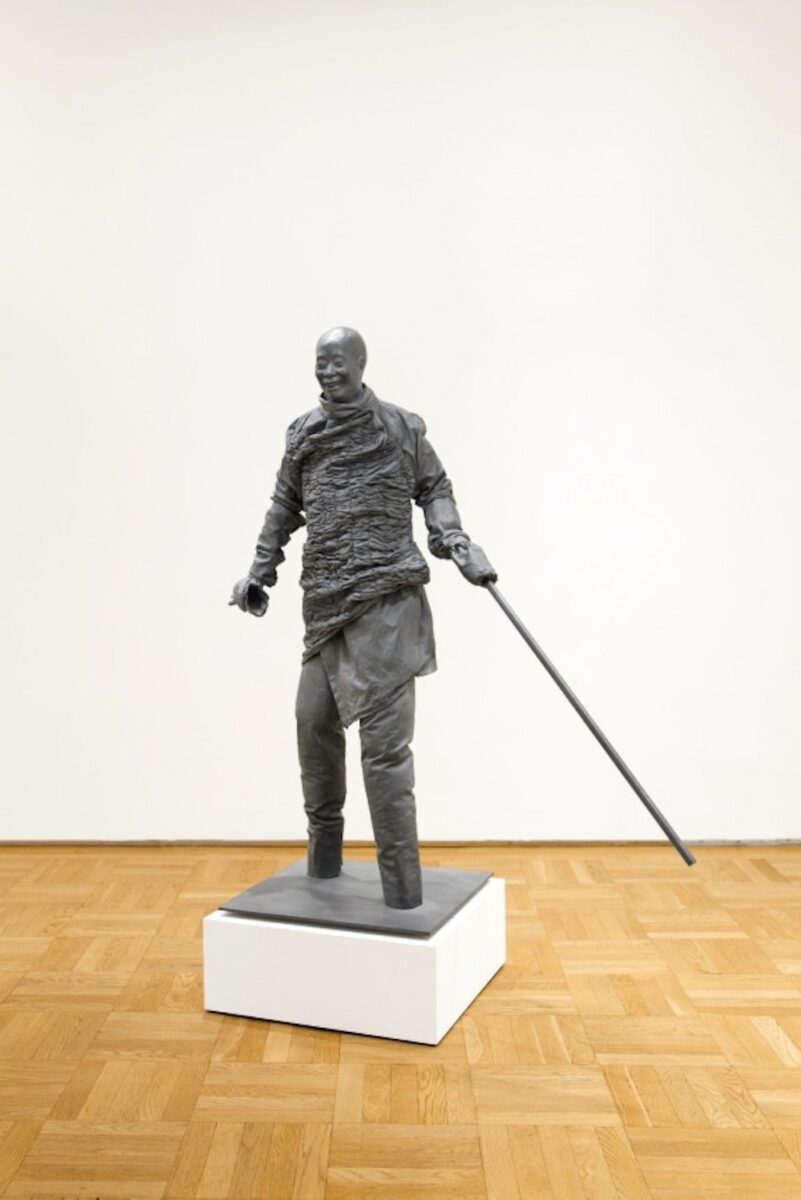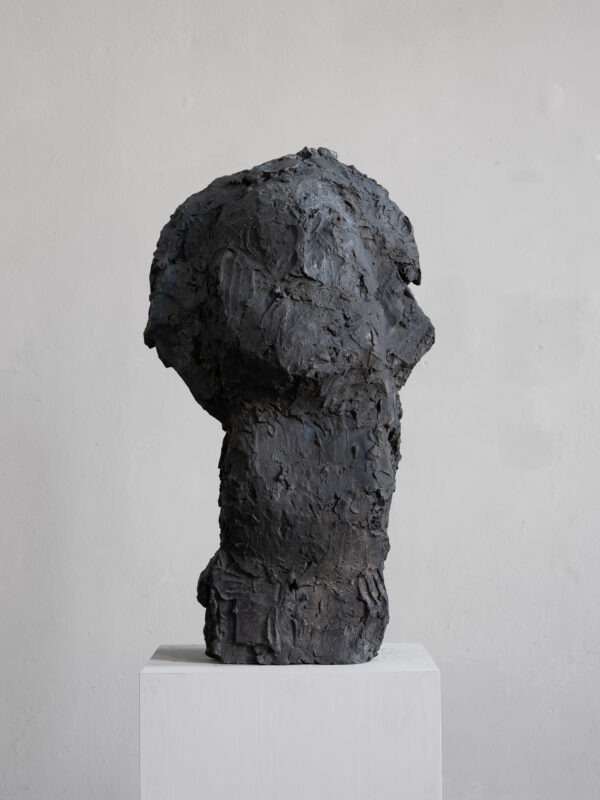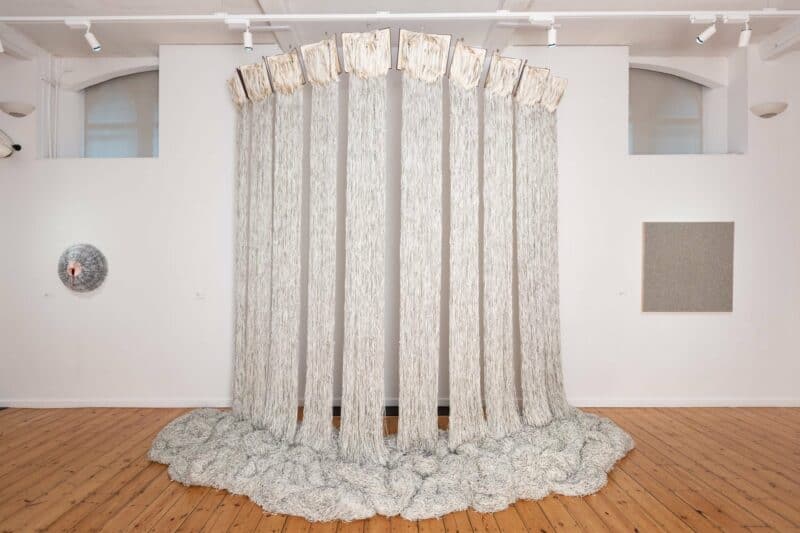
Skarstedt Paris to open an exhibition of sculptures by Spanish artist Juan Muñoz (1953–2001). The exhibition will mark the first solo presentation of the artist’s work in Paris since 2004 and will feature his iconic floor-based sculptures, wall-mounted figures, suspended solitary men, and balcony pieces. Tracing the years 1991–2001, Juan Muñoz: Coming Towards illustrates the progression of a full decade of the artist’s short but impactful career.
Muñoz believed that a sculpture is activated by its relationship to the viewer and the surrounding architecture. Understanding that sculpture only makes sense in human terms, his figures function as mini-narratives that playfully, almost mischievously, speak to the lives we lead, our relationship to the world around us, and the enigma of the smallest human gesture. This holds true even when presented with a single figure, as seen in many of the works on view in the exhibition. Rooted in notions of spectatorship espoused by minimalist artists such as Donald Judd, to look at a Muñoz sculpture is to enter a theatrical world in which all is not what it seems.
This is perhaps most evident in pieces that utilize the wall or the ceiling, involving the entire space as part of the work. Albuquerque Balcony (1993), for instance, reveals two characteristically gray figures seated across from each other on a cramped balcony positioned over the viewer’s head. One of the earliest motifs to enter the artist’s lexicon, the balcony manipulates the surrounding architecture in a theatrical manner, shifting the relationship between work and viewer. By forcing the viewer to come closer than is natural, and to crane their neck to see the piece in full, Muñoz’s trickster side comes out—a description he welcomed and cultivated. Tricks of scale and slights of hand continue in Three Laughing at One (2000), which is rendered at slightly smaller than life-size and positioned just high enough on the wall that the three men appear not only in a fit of raucous laughter, but higher up and farther away than they really are, which draws the viewer in closer. Once the viewer arrives at the proper point of engagement, it becomes clear that they are the “one” in the work’s title—the one being laughed at, the one who fell into their trap. Suspended from the ceiling Hanging Figure (1997), inspired by the acrobat in Edgar Degas’ 1879 painting Miss La La at the Cirque Fernando, is simultaneously intriguing and unsettling, a viscerally felt piece as well as a visually seen one. The viewer is here forced to crane their neck to take in the full scope of the work, creating a new rapport and verticality.
Space takes on an existential quality in Walking with a Pointing Stick (2001). Part of a series of Chinese figures Muñoz started in the 1990s, the man’s face elicits a self-awareness in the viewer as they contemplate his tenderly frozen expression. Stuck in mid-laugh, as many of his figures are, this man distances himself from the viewer instead of drawing them in closer. Muñoz consciously evokes a feeling of “otherness” throughout this series, to, in his words, “behave as a mirror that cannot reflect.”[1] In presenting an archetype more than an individualized figure, Man with a pointing stick allows the audience to look, but not see. Furthermore, he is imbued with a tension between movement and stasis: the man is walking, and yet he has no feet. Likewise, Untitled (1991), with its voluminous round bottom, feels like it could topple over at any minute, and yet he remains firmly upright, while Blotter Figures: Coming Towards (1999) can move forward with ease, and yet cannot see where he is going. These choices not only remove any sense of naturalism from the figures but their singularity as figures investigate solitude and the failures of communication, balancing conviction and a lack of conviction.
Muñoz belongs to an important group of sculptors from the 1980s and 1990s such as Robert Gober, Charles Ray, and Thomas Schütte who reinvigorated the human form in three dimensions, ushering in a new era of the medium—a trend seen throughout those decades across all media by painters including Eric Fischl, David Salle, George Condo, and Jeff Koons. Taking an interest in space and formal discipline of minimalism, coupling it with the intellectual restraint of conceptual art, and transferring it to figuration, Muñoz’s figures are at once humorous and fraught, unsettling and inviting, alive and frozen. They reveal his deep understanding of art history and the human condition, yet deny the viewer the satisfaction of teaching us some sort of universal truth. Instead, Muñoz’s leaves his viewer with allegories, speaking in three-dimensions what we cannot in words.
Juan Muñoz, Coming Towards, March 21st – April 27th, 2024, Skarstedt Paris









